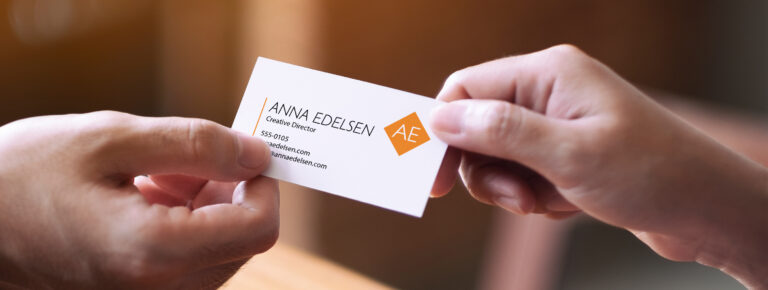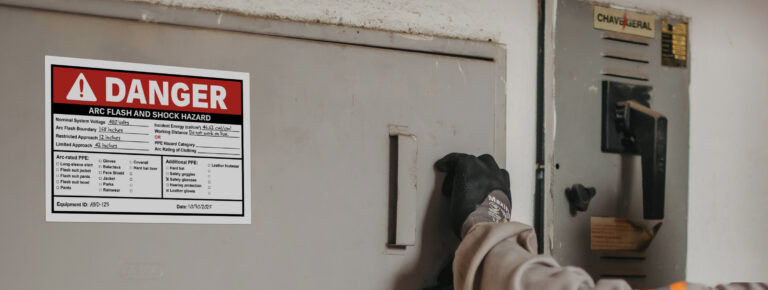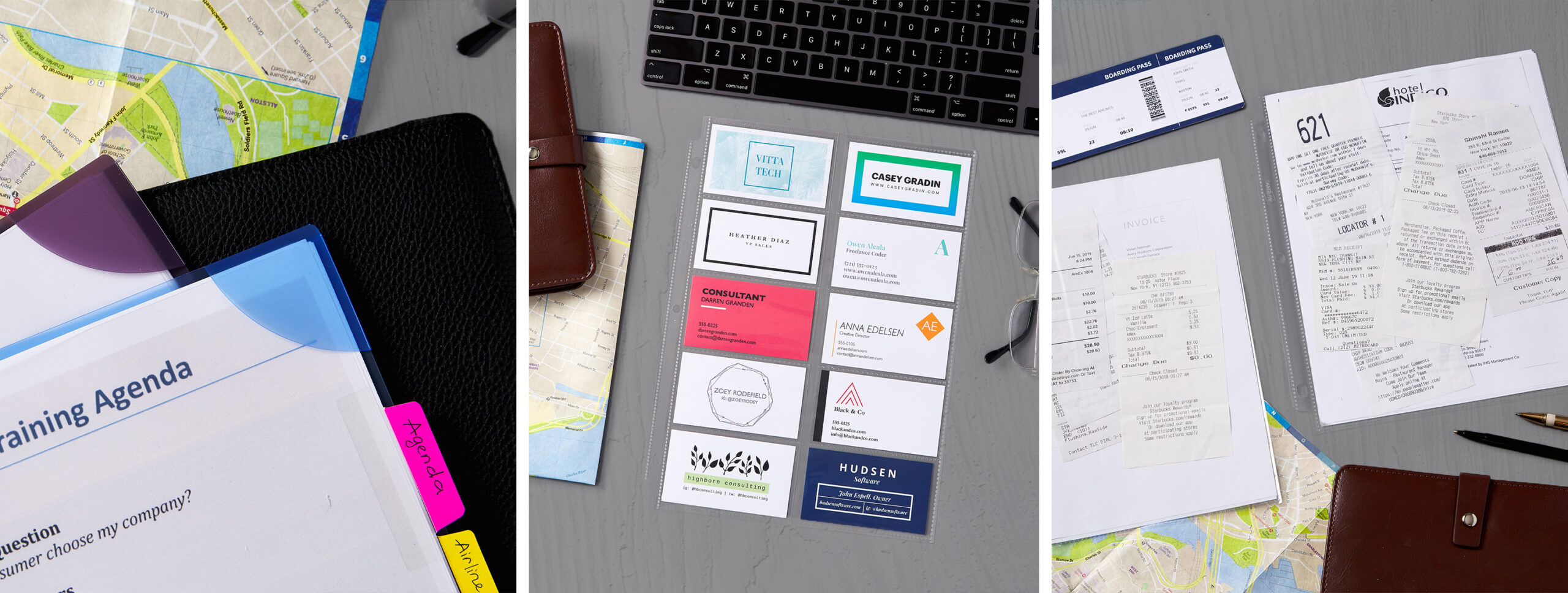
Top 3 Ways to Get Organized for a Business Trip
Estimated reading time: 8 minutes
How to organize for business travel
From week-long conferences to 1-day client meetings, all business trips require a lot of planning and preparation. With itineraries and accommodations, luggage and wardrobe, plus everything else you need to conduct your business successfully, there are so many things you need to manage.
To help you stay on track, we’re sharing our top 3 tips for getting organized for business travel. We’ll also answer the most popular questions about taking a business trip. Whether you’re gearing up for your first work trip or you’re a business class frequent flyer, you can use these tips to prepare for every type of business travel.
More articles you might like:
1) Review, update, and order business cards
The main purpose of any business trip is, of course, your business, so our first tip focuses on setting up a great first impression with business cards ready to hand out. Review your cards a week or two before your trip to make sure everything is current. If you’ve been promoted recently or have changed your contact information, it may be time to get new cards.
You have two options when it comes to new business cards: print them yourself or have them printed for you. No matter which route you take, Avery has the tools you need to help you create your own custom business cards.
First, choose from a variety of cardstock materials, finishes and sizes. Then use our free design software, Avery Design & Print Online (ADPO) on your computer, tablet, or smartphone to customize your own business cards. Design your cards from scratch or use one of our free business card templates to get started. Our easy-to-use design software also offers a wide variety of graphics and fonts to personalize your cards any way you want.
Expert Tip: Add a modern twist to your business card with a scannable QR code. The QR generator in ADPO makes it easy to transform your cards and engage your clients.
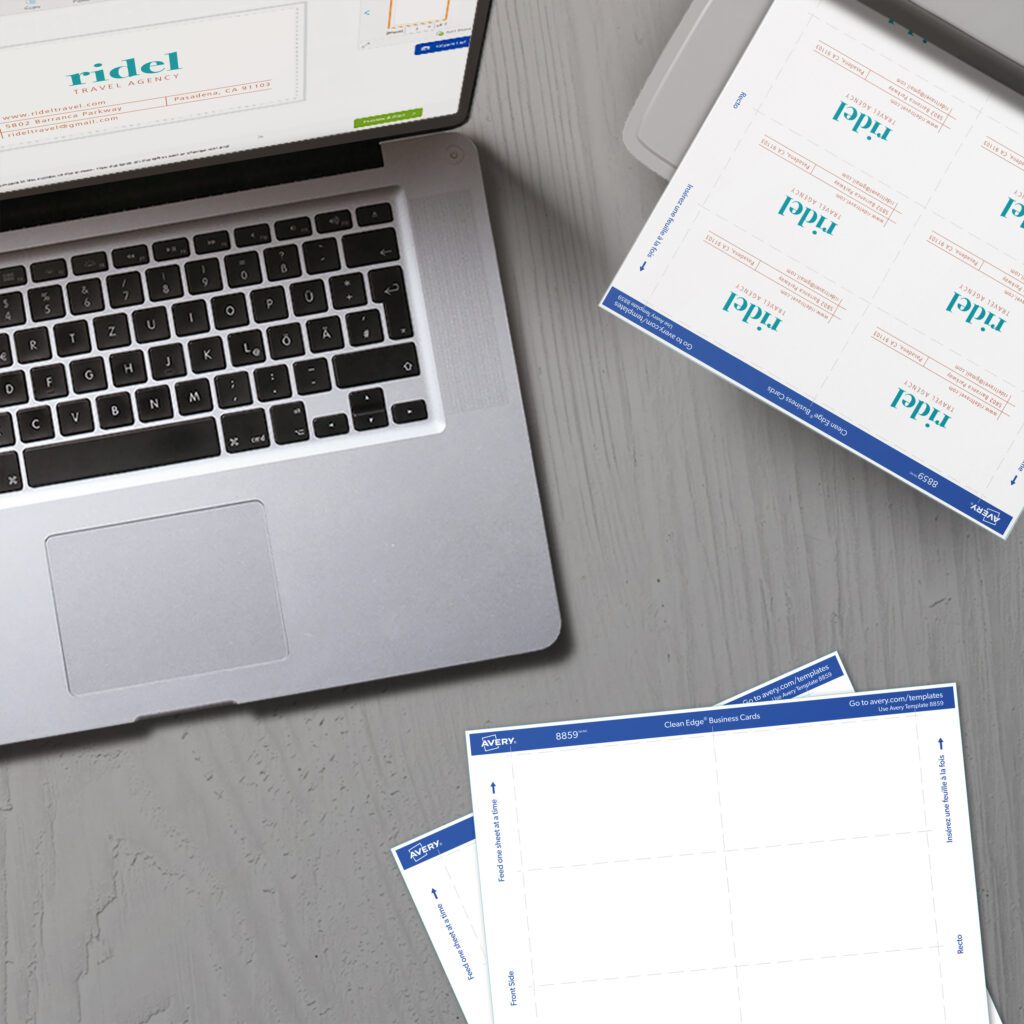
Printing your own business cards is ideal for when you only need a small number of cards or need your cards immediately.
Our printable Clean Edge® Business Cards are the perfect blank canvas for showcasing your custom designs, and the Clean Edge Technology ensures your cards snap apart cleanly and easily for a neat and professional look.
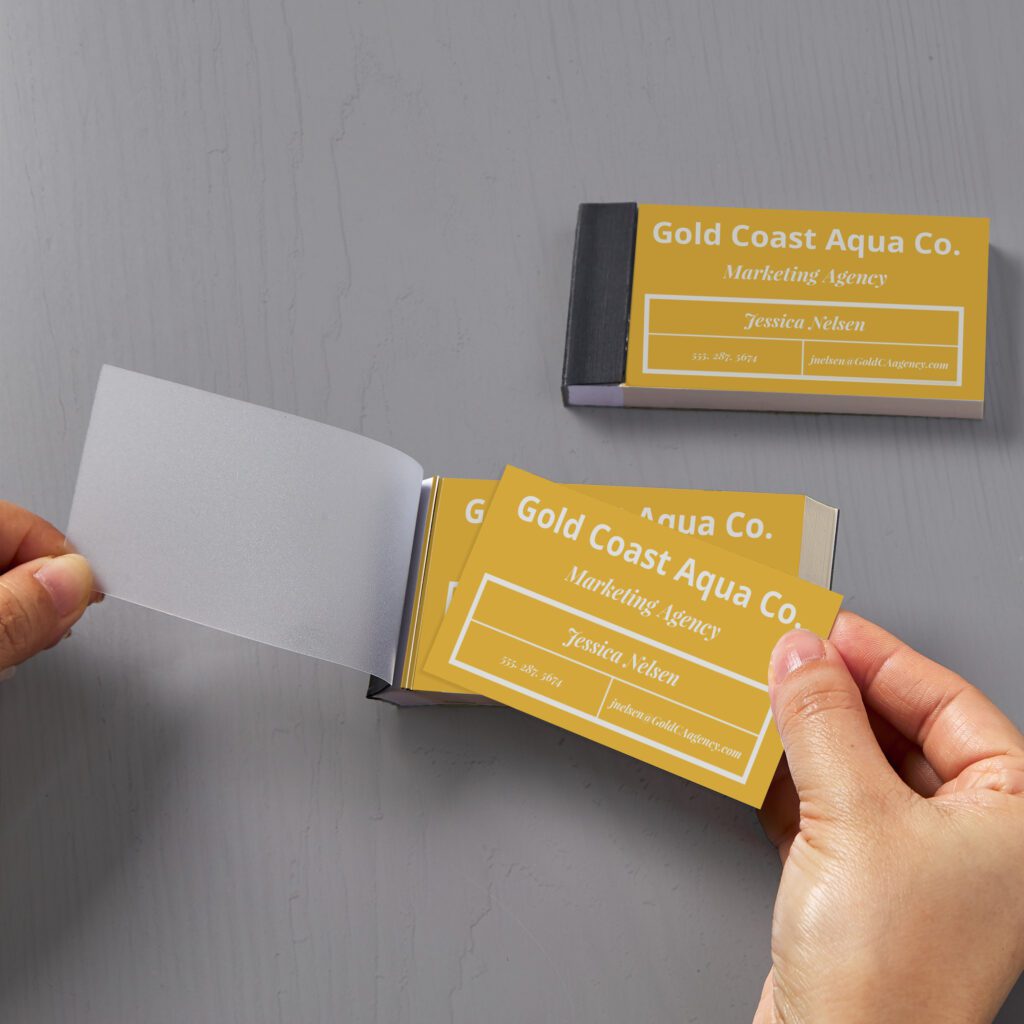
If you’re in need of a larger quantity of business cards, Avery WePrint® offers a superior print quality, quick turnaround, and 100% satisfaction guaranteed.
Consider ordering our custom Business Card Books™, which are premium business cards bound together and fit in your pocket, purse, or briefcase, and keep your cards safe and accessible.
Tips for printing business cards yourself
If you do decide to print your own business cards, here are some quick and easy tips for the best print results:
- Choose the right cards for your printer: Our blank business cards come optimized for laser printers or inkjet printers, so make sure you get cards compatible with your specific type of printer.
- For more efficiency and less waste, use Sure Feed®: Business cards with Sure Feed technology provide a more reliable feed through your printer for fewer misalignments and paper jams.
- Adjust your printer to the correct setting: Every printer is different, so make sure you’re using the cardstock setting or best printer setting indicated in the product instructions.
- Take advantage of two-sided business cards: Get the most out of your business cards by creating beautiful, double-sided designs.
- Consult the experts: If you need help with our templates or ADPO, visit our help page or contact our Customer Care Team at (800) 942-8379 for more resources or advice.
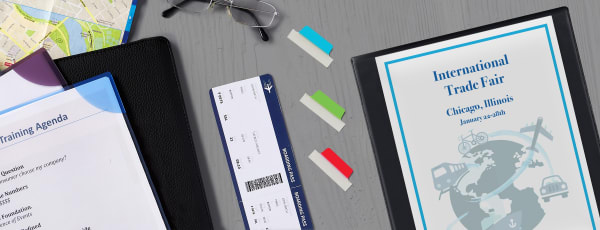
2) Organize travel plans and presentation materials
As mentioned earlier, there are many tasks to take care of when preparing for a business trip. As such, things can quickly become overwhelming if you don’t stay on top of them. To better manage all your traveling paperwork and business materials, keep them organized and easily accessible in a dedicated binder.
Create a simple and effective travel binder to house all the paperwork or hard copies you’ll need for your trip. Use plastic pocket dividers or tabs to create separate binder sections for your itinerary, flight and hotel accommodations, receipts, and anything else you need.
Don’t forget to save some room in your binder for last minute additions or additions during your trip. You should also include business card sheet protectors to store any business cards you receive. This is especially helpful if you’re traveling for a conference or tradeshow.
Store your presentation materials and business documents in Corner Lock® Document Sleeves. These plastic sleeves keep your papers readily accessible and protected from stains and creases. Keep the documents sleeves, binder, and other business materials (e.g. laptop, report handouts, notes, etc.) together and within reach to help ensure everything goes smoothly.
3) Think about wardrobe for your destination and travel
Again, the main focus of any business trip is to promote your business. That said, you should maintain a positive impression throughout the trip. This includes presenting a professional appearance from the get go, which is where our third tip comes in.
While you’ll want to bring enough proper attire for your business dealings, it’s also important you dress comfortably, yet appropriately when not in business mode. Consider your destination, the weather, and the events or activities you’ll be attending and pack a wardrobe based on that. Even if everything is business casual though, make sure you bring one nicer business outfit just in case.
When it comes to travel and off-work outfits, make sure your clothes are neat, clean, and in good repair. Remember, you’re representing the business at all points, so refrain from anything that can be considered offensive or unprofessional. Avoid items with political or religious views, sports teams, or other logos. To be safe, bring some casual clothing with the company logo.
Lastly, don’t wait until the night before to pack. Try to give yourself at least a week in case you need to do some last minute shopping.
Most common questions about traveling for business
What defines a business trip?
A business trip can be defined as a visit to a place that is undertaken for business or work purposes. These trips usually involve traveling some distance and take longer than an ordinary work day.
Why business trips are important
Business trips are important for building and improving your business. Personally meeting and engaging with customers and clients is great for promoting your business.
Tradeshows allow you to exhibit your products and services, gain consumer awareness, and attain valuable insights into a variety of companies, ideas, and the latest trends.
You can also network and maintain relationships with other businesses and experts while attending conventions and corporate events. Plus, seminars and workshops are perfect for increasing your industry knowledge and expanding your business outreach.
How long is a business trip?
The length of a business trip is dependent on what needs to get done. For example, short trips like client meetings or office visits can be done in one or two days. Conferences, company retreats, and training trips, on the other hand, can take a week or longer.
Are business trips tax deductible?
According to the IRS, you can deduct the necessary expenses incurred while traveling away from your tax home (the city or general area your business or work is located) for work-related purposes. This only applies if the travel or work assignment is less than one year. Travel expenses can include transportation, lodging, some types of meals, shipping of baggage, etc.
Organize for a smooth and successful business trip
Staying organized is the best way to prepare for any trip. Take the time to make sure you have everything you need and that everything you need is in its place. The more you’re prepared, the easier your business trip is likely to go.
Also, avoid unnecessary stress by giving yourself plenty of time to prepare. Look up flight and hotel deals as soon as you know the dates for your trip, don’t pack last minute, and head to the airport early. A good rule of thumb is to arrive two hours before a domestic flight or three hours before an international flight. This gives you enough time to check bags and go through security without feeling rushed.
Most importantly, always remember to present your business in a positive light. After all, the more successful your business trip is, the more success it can have on your business.
What are your work trip organization tips? Share your advice with our community on Facebook and Instagram.

